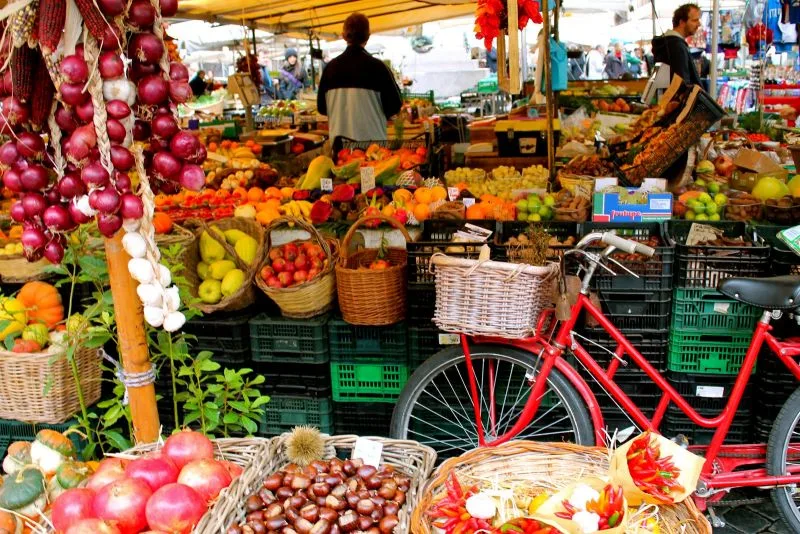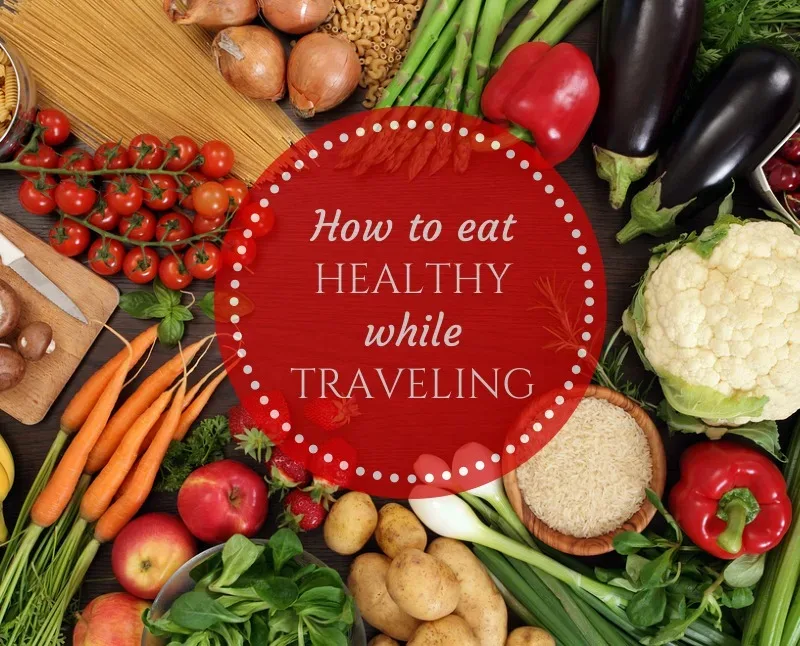A Foodie Allergy Guide to Rome
Everybody loves food! With a relatively recent rise of chronic intolerances to allergens commonly found in processed foods (e.g. gluten (wheat), lactose (dairy), soy, etc.), many individuals have developed dietary regimens and eating patterns that require nutritional literacy and planning. However, it can be difficult to maintain a diet catered to your needs while traveling abroad, as certain foods are not available, nutrition labels are structured differently, and restaurants may not have proper resources for specific dietary needs. Here are a few tips for navigating the nutritional scene while traveling abroad! You can also checkout Romeing’s list of Gluten Free Restaurant in Rome.

Check Your Labels
It is essential to know what you are eating, checking the label is the best way to see what is actually in the food you are about to put in your body. Especially with processed foods, this is an extremely important step to take to maintain a healthy diet.
Always check the ingredients. Some labels may have ingredients listed in multiple languages, but often they are only listed in another language – hint, use your google translate app – the camera option will translate things for you instantly!
Often, allergens will be bolded (e.g.soya). Take a look at some labels at your local grocery store, familiarize yourself with the allergens and their translations to determine which foods are healthy for you to eat.
Watch out for “senza…” products. Often, products that are “senza glutine” or “senza lattosio” (that is, gluten-free or dairy-free) but may contain several other unhealthy artificial alternatives and preservatives as fillers. Just remember to always read the ingredients!
Pay attention to the percent daily values of major food groups in the product. Fat, sugar, carbohydrate, fiber, and protein content are all listed in grams, read and consider this part of the label just as you would normally!
Understand the difference between kilojoules (kJ) and calories. Sometimes, the energy content in food is measured and labeled in terms of kilojoules (kJ), rather than calories. Essentially, these are two words for measuring the same thing: energy content in food in terms of how much energy your body needs to use to burn it. 1 calorie = aprox 4.2 kJ. The World Health Organization recommends a 2,000-calorie daily diet to the average adult, this would equal approximately 8,400-8,7000 kJ per day. It is important to remember, though, that everybody has different caloric intake needs which vary person-to-person based on age, sex, amount of physical activity, desire to gain/lose weight, etc.
Check out this link with a kilojoule to calorie conversion calculator, list of popular foods and their kilojoule content, a personalized daily kilojoule calculator, and other helpful tips for more information!

Gluten Free, Dairy Free, Vegetarian & Vegan Restaurants in Rome
Everybody enjoys meals out at restaurants, but it can be difficult to maintain a diet catered to your needs specifically. If the restaurant is not specifically advertised as “gluten-free,” “dairy-free,” or whatever your dietary need may be, don’t worry! You can always ask your server if they have options for you. A common phrase that I use while dining out here is, “Hai senza ______?” Insert your allergen in the blank. For example, “Hai senza glutine?” means “Are there any gluten free options?”
Another way to ensure adherence to your dietary regimen is to look for restaurants that are specifically advertised to cater to your needs. Here is a list of great restaurants with specific dietary awarenesses:
Gluten-Free
Mama Eat — Via di San Cosimato 7/9→ This is a fabulous pizzeria and restaurant that has been serving quality gluten-free food since the 1990’s! Everything on their menu can be made gluten-free, and they have the absolute best gluten-free pizza in Trastevere. They also offer gluten-free pastas, lasagna, etc.
Il Tulipano Nero — Via Roma Libera, 15→ This is another lovely pizzeria and restaurant in Trastevere whose menu offers a gluten-free option for each item on it. I would highly recommend their selection of gluten-free pastas. However, if you’re looking for the best gluten-free pizza, I would suggest heading over to Mamma Eat.
Panella Supermarket — Via Natale del Grande, 18→ Though not outwardly advertised as a gluten-free supermarket, this grocery store offers a decent selection of gluten-free products such as pasta, crackers, bread, cookies, and other baked goods. Just remember to check your labels!
Vegetarian/Vegan
Universo Vegano — Piazza di Santa Rufina, 6→ This is a wonderful chain vegan restaurant with many locations throughout Italy that is almost “fast-food” style. They stress environmental sustainability and local food sourcing, so all of their ingredients are very fresh.
Il Margutta — Via Margutta, 118 → An upscale bistro that offers a large menu of traditional Roman and Italian dishes with a vegan twist.
Le Bistrot — Via delle Sette Chiese, 160 → With a warm atmosphere, this restaurant/cafe offers super tasty vegan Italian comfort food.
Dairy-Free
Fatamorgana Gelato — Via Roma Libera, 11 → This is a gelato chain with locations throughout Rome. Not only do they offer a wide variety of dairy-free gelato flavors, but they also indicate which allergens are in each flavor very clearly (and offer several allergen-free flavors)! They have sugar-free, dairy-free, gluten-free, soy-free, and many other options available. Additionally, if you bring a friend along, they do offer gelato flavors made with dairy as well.
Günther — Via dei Pettinari, 43 → This quality gelato shop offers several traditional and artisanal gelato flavors in dairy-free options. They stress the high quality of their gelato ingredients.

Shop the local markets & cook at home!
Enjoy shopping the local food markets while abroad!
An excellent market in Rome is the Campo di’ Fiori Market Opening hours Monday – Saturday (early morning 7AM – 2PM)
Coconut Oil — Really, you just need any type of cooking oil to use (e.g. olive oil, vegetable oil, peanut oil, etc.). I prefer coconut oil personally based on how it interacts with my skin, compared to other cooking oils.This will be what you actually cook the majority of your food in, so make sure you find a cooking oil that works best with your body and diet. Use this oil as a base for cooking so as food does not burn or stick to pans.
Spices — Add flavor to your food! Season meats, vegetables, etc. with spices of your choice. Personally, I like to include in my variety some dried basil, parsley, thyme, rosemary, nutmeg, chili pepper, and cinnamon. Buy according to your taste and according to what you are seasoning. Also, of course, don’t forget salt and pepper!
Onions, Garlic, and Ginger —Saute this trinity of flavor in a saucepan with a bit of cooking oil, and you have a flavorful base and catalyst for a healthy dish! I find that I use this as a base for many dishes I make, from meats to vegetables.
Eggs — Not only are scrambled eggs or an omelette a fantastic, quick, and easy breakfast option, but eggs are also used very commonly in both cooking and baking. Typically, they are used as a binding agent, which can be useful while making breads, crusts, etc.
Wine — Use red, white, or any type of cooking wine you prefer as a deglazer while cooking. This means, that if you are making, for example, sauteed brussel sprouts with pancetta and onions, if little bits of pancetta and onion start to stick to the bottom of the saucepan and caramelize a bit too much, you can use wine to break up the sticking and get all those crispy bits into the dish. This also adds such a richness and sweetness to whatever dish you are making.
Stock— Again, use any type of stock you prefer (chicken stock, vegetable stock, beef stock, etc.). Stock is another liquid element that can be used in cooking to add flavor to dishes. It is also a means used to keep food on the fire longer while cooking that prevents the food from burning and sticking to the pan.
Milk — I actually do not keep milk in my kitchen, but in efforts to avoid dairy, I use coconut milk instead (dairy milk can be replaced by any type of nut milk). Typically, this is used in cooking and baking to add an element of richness to the food.
Lemons/Limes — I always keep some type of citrus in my kitchen. Lemons or limes can be used to add an element of acidity to a dish, while also containing natural sugars that help with caramelization (good for sweetness). This acidic element can create a very complex development of flavor in a dish interacting with your other ingredients, making for a savory success in cooking!
Honey/Agave/Cane Sugar — I try to avoid using white sugar, so instead, I turn to these more natural alternatives. Each of these can be used to add sweetness to a dish, and of course, catalyze the caramelization process. They can also be used in baking, tea, and coffee instead of white sugar.
Rice/Potatoes — Keep these in your kitchen at all times, as they are wonderful go-to’s to serve as the carbohydrate component in the composition of a balanced meal (protein, vegetable, carbohydrate). Boil some water to steam your rice or bake some potatoes brushed with coconut oil, salt, and pepper while you are cooking your protein and vegetable.
Fruits of Choice — Fruits serve as a wonderful healthy snack. Also, they can be very easily worked into home-cooked meals and baked goods, so get creative!
Always remember to buy meats, fish, vegetables, etc. fresh!




